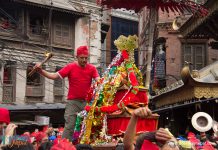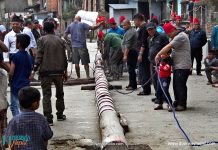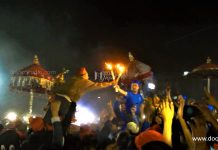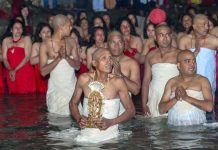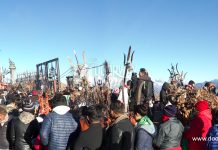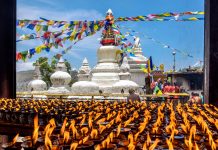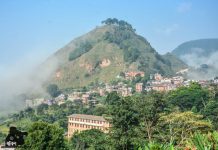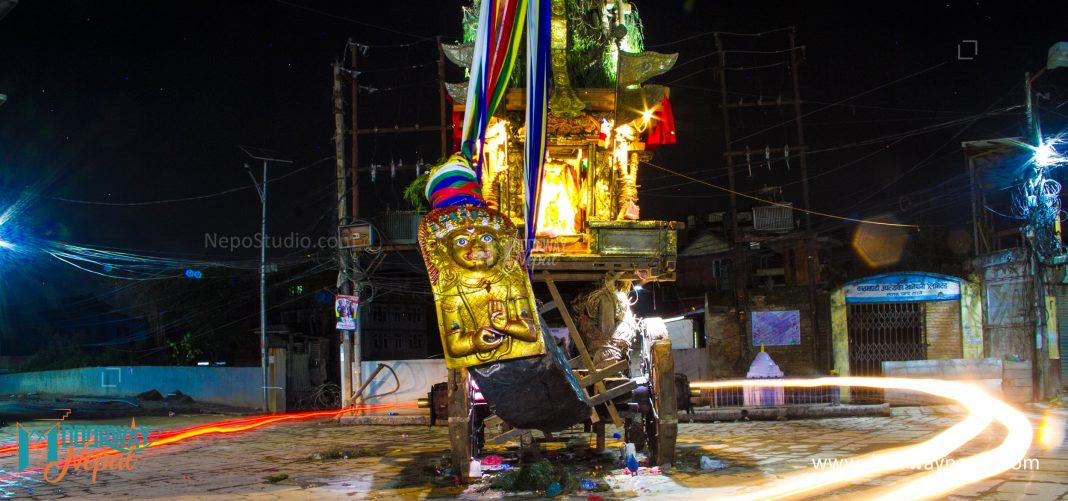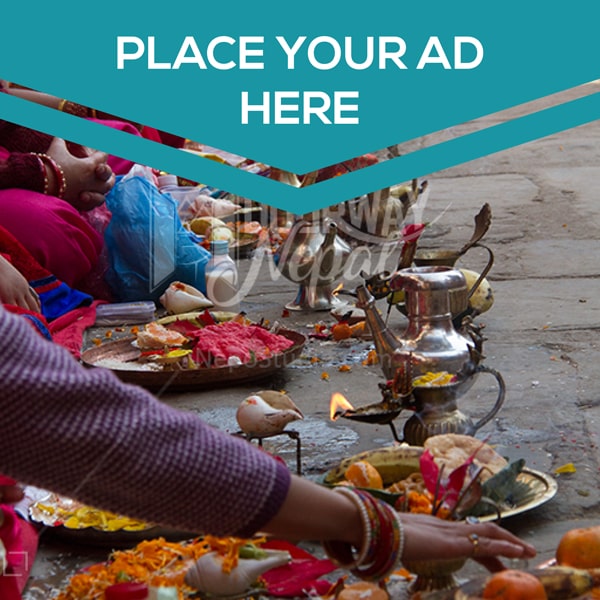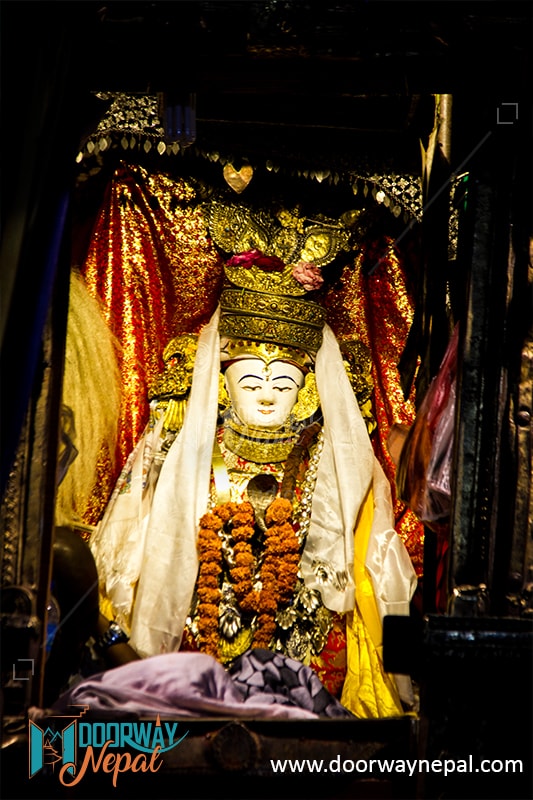
Seto Machhendranath, also known as Janabahaa Dyo, Aryaavalokitesor, Karunamaya and Lokesor is believed to have the capacity to relieve living beings of any kind of suffering and is accredited as the rescuer of every creature on Earth.
The chariot festival (Rath Jatra) begins after the idol of Seto Machhendranath is carried out in a khat (carriage carried by men) from the temple at Kanak Chaitya Mahavihara, Janabahal to a majestic chariot placed at Jamal hence the procession commences.
The first day sees young enthusiasts pulling the colorful and huge chariot from Jamal. It is rested at Ason and is known as Ason Ya. On the second day, the chariot is pulled from Ason and is rested in front of the Kaal Vairab idol at Hanumandhoka which is called Lyaku Ya. The procession begins on the third day to reach Lagan through Maru, Chikanmugal, Jaisidewal and Jya Bahal and is called Kone Ya.
Ya yagu is the term given to rest the 13- storeyed chariot at these particular places — Ason, Hanumandhoka and Lagan. At Lagan the chariot takes three rounds of Maa Simha (Mother Tree) that can be completed on the fourth day of the festival, sometimes it takes longer than that.
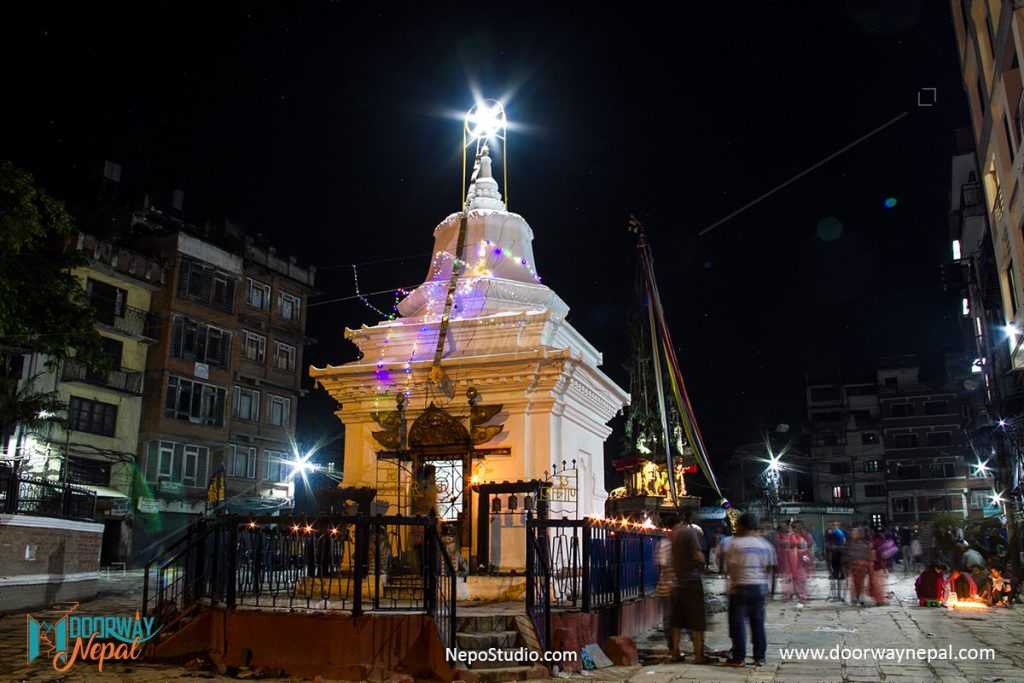
After circling the Maa Simha, the idol of Seto Machhendranath is again carried on a khat accompanied by people and music and taken to the deity’s original place at Janabahal.
There is no certain proof on when the chariot procession started; it is said it was formally established during the reign of king of Jaya Prakash Malla but it had been observed even earlier than that. As Seto Machhendranath is the Lord of Compassion, legend says he asked the then king to start a chariot procession so that he could give darshan (visit) to people unable to visit him at Janabahal.
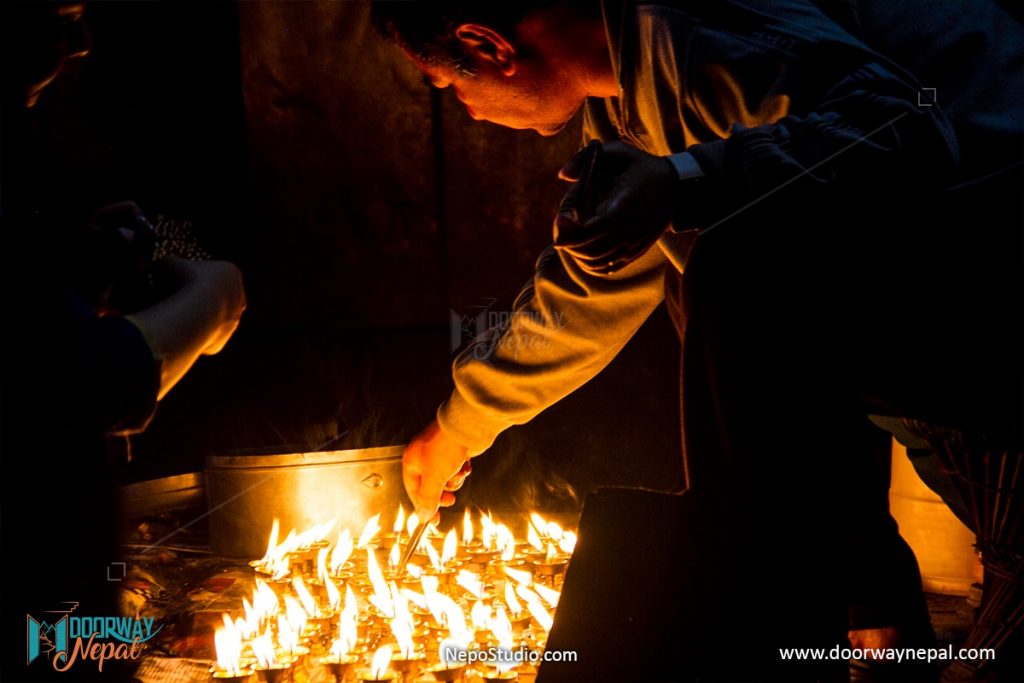
If someone is very sick and in immense pain, his/her family members can visit the Seto Machhendranath and light butter lamps. Seto Machhendranath will look after the sick person — if the time of that person has come, s/he will die not having to suffer more; and if that person has time to live, then s/he will recover soon. Any whimpering child can be calmed down if that child’s face is washed with the water or curd from the Seto Machhendranath’s temple.
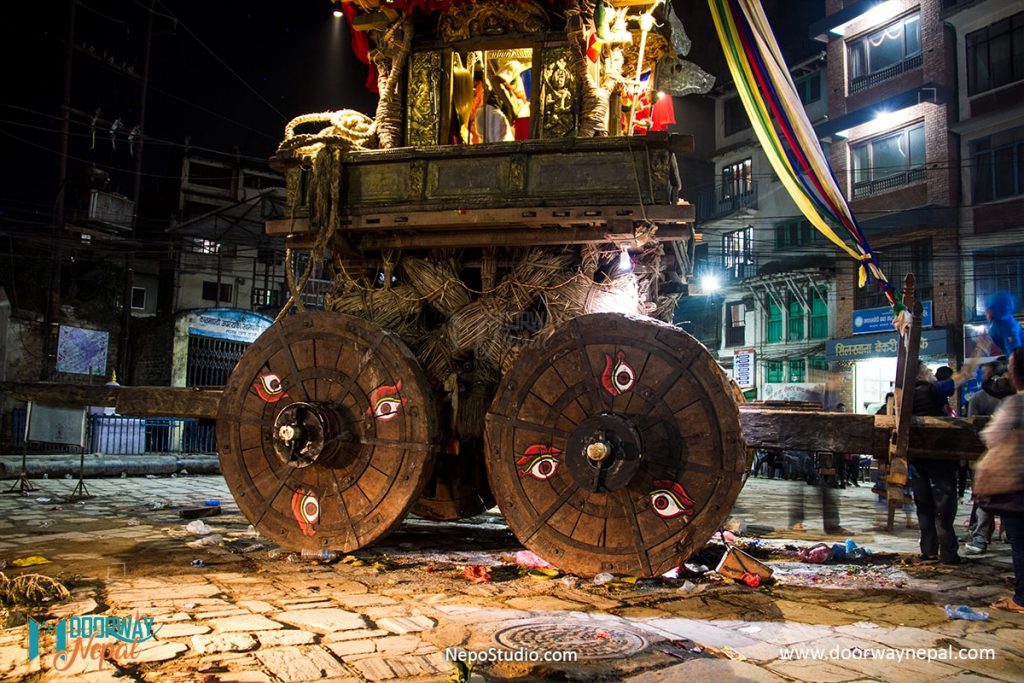
And with the hope and belief for the long life of their husbands and peace/prosperity in the family, wives offer plain long strips of cloth in various colors — white, green, red, blue and yellow — to the deity during the jatra.



